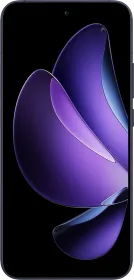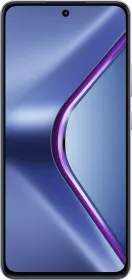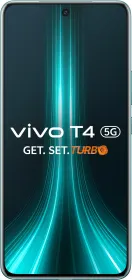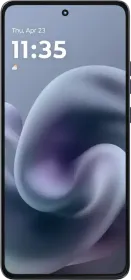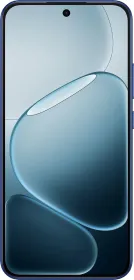When you’re buying a new phone or any device, the IP rating is one of those things you might glance at but not fully understand. Yet, it’s a crucial spec, especially if you’re someone who loves the outdoors, works in harsh environments, or simply wants to avoid an accidental gadget mishap.
Today, we’ll dissect what IP66, IP67, IP68, and IP69 mean, how they compare to each other (and even to 5ATM), and which one might be best for your needs. So, let’s jump in.
Understanding IP Ratings: The Basics
IP stands for Ingress Protection—a global standard that defines how well a device resists dust and water. It’s defined by the IEC 60529 standard, with two numbers following the “IP.”
- The first digit: Protection against solid particles (like dust).
- The second digit: Protection against liquids (mainly water).
The higher the numbers, the better the protection. For example, an IP68-rated phone will offer superior resistance compared to an IP66 device.
Let’s break down the specific differences between IP66, IP67, IP68, and IP69, including their protection levels, real-world scenarios, and even some limitations.
ALSO READ: Samsung Galaxy S25 Ultra Hands-On Review: What’s New?
IP66: Dustproof and Water Jet Resistant
Dust Protection: The “6” in IP66 means it is completely dust-tight. No particles, no matter how small (down to <1 micron), can get inside.
Water Resistance: The second “6” means it can withstand powerful water jets (100 liters per minute, 12.5 mm nozzle, at a pressure of 100 kPa from a distance of 3 meters). However, it cannot handle submersion.
Devices with an IP66 rating are typically tested between -10°C to 40°C during water jet tests. IP66 isn’t explicitly tested for salt water, but prolonged exposure can corrode seals unless the manufacturer specifies otherwise.
IP67: Dustproof and Submersible
Dust Protection: Like IP66, it is fully dust-tight. No grains of sand or dirt can penetrate.
Water Resistance: It can survive immersion in water up to 1 meter for 30 minutes. This is tested in fresh water, and salt water can degrade seals over time unless specifically designed for it.
The immersion tests typically range between 15°C to 35°C. Also, there is no protection against water jets. It’s safe for accidental drops in water or short underwater usage.
IP68: Dustproof and Deep Immersion
Dust Protection: IP68 is also fully dust-tight, like IP66 and IP67.
Water Resistance: The “8” means it can handle submersion beyond 1 meter, with depth and time depending on the manufacturer (commonly 1.5–2 meters for up to 30 minutes). Some devices like the latest iPhone can go as deep as 6 meters for 30 minutes.
The temperatures tested are usually between 15°C to 35°C for immersion. And while manufacturers often claim IP68, very few guarantee salt water resistance. If used in salt water, rinsing with fresh water afterward is essential. Although avoiding salt water altogether is better.
ALSO READ: Samsung Galaxy AI gets New Capabilities: One UI 7 Goes Official
IP69: High Speed, High Temperature Water Jets
Dust Protection: Again, like the others, fully dust-tight.
Water Resistance: IP69 can handle high-pressure, high-temperature water jets (80°C water sprayed at 100 bar from 10–15 cm). It’s not for immersion but surviving extreme cleaning processes. It’s designed for industrial environments with temperatures reaching 80°C during water testing.
Again, it’s not intended for salt water; it’s more about pressure and heat than immersion. Until recently, this was unheard of on consumer devices. Now, several phones boast this rating. Is it useful on phones? Probably not.
What About Salt Water?
Most IP ratings are tested using fresh water, not salt water. Salt is corrosive and can damage seals, even in IP67 or IP68 devices. Manufacturers like Apple or Samsung occasionally add saltwater resistance to their products, but it’s not standard. If you’re using your device in salt water, always rinse it with fresh water immediately afterward.
ALSO SEE: Reliance Jio Coins FAQ Guide: Usage, Earning Jio Coins, Value & More
How Does 5ATM Compare?
Unlike IP ratings, ATM (atmosphere) is a pressure-based measurement often used for watches. For example, 5ATM can withstand pressure equivalent to 50 meters of depth but does not guarantee resistance to strong water jets or dust.
| IP Ratings vs 5ATM | Dust Resistance | Water Jets | Immersion Depth |
| IP66 | Yes | Yes | No |
| IP67 | Yes | No | 1m (30 mins) |
| IP68 | Yes | No | >1m (varies) |
| IP69 | Yes | Yes (High temp) | No |
| 5ATM | No | No | 50m (pressure) |
While 5ATM is great for swimming, IP68 is better for dustproofing and varied water scenarios. Some devices, like certain smartwatches, combine IP68 and 5ATM.
Devices with Multiple Ratings

Some premium devices (even some midrange ones) boast dual or multiple ratings, like IP66 + IP68 + IP69. And now that you understand each of these ratings, you’ll know that there’s a benefit of having multiple ratings. This gets you the best of all worlds—dustproofing, submersion, and high speed water jets. Examples include:
- OnePlus 13: IP68 + IP69
- Redmi Note 14 Pro+: IP69 + IP68 + IP66
- Apple Watches (IP68 + WR50, a variation of 5ATM)
Which One Should You Choose?
- IP66: For rugged environments, construction, or extreme dust.
- IP67: For general protection with occasional water exposure.
- IP68: Ideal for flagship devices and accidental submersion. Make sure to check the fineprint for the specifics bebas they can vary.
- IP69: I feel like it’s an overkill unless you work with industrial-grade equipment.
- 5ATM: Better for swimmers, but not dustproof.
Bottom Line
In short, IP ratings aren’t just a gimmick—they’re an essential indicator of durability. However, making IP ratings a selling point and doing extreme tests like dishwasher and washing machine immersions isn’t a good thing. An IP rating should be a bonus, not a selling point.
You can follow Smartprix on Twitter, Facebook, Instagram, and Google News. Visit smartprix.com for the latest tech and auto news, reviews, and guides.





















